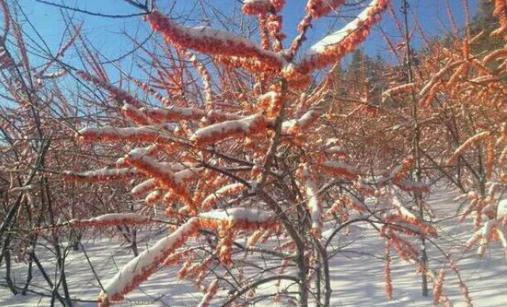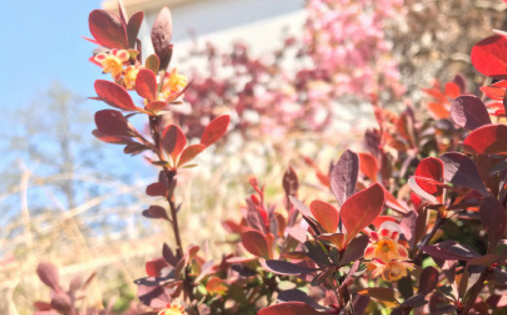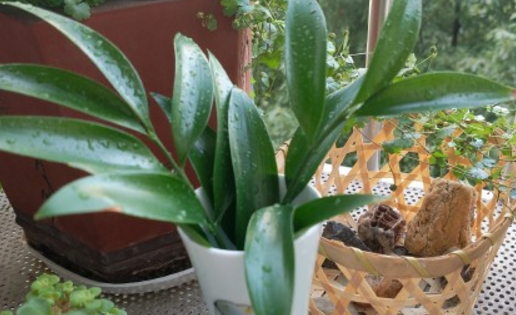The cultivation methods and matters needing attention of Hippophae rhamnoides in Rosacea? What is the effect and effect? How to sow seeds?
Hippophae rhamnoides is vinegar willow, also known as black thorn and acid thorn, so the breeding methods and points for attention of seabuckthorn? What is the effect and effect? How to sow seeds? It is understood that Hippophae rhamnoides is a relatively cold-tolerant plant, and can tolerate salinity and barren, and its vitality is very tenacious. Hippophae rhamnoides is a very precious economic tree species, because it contains high vitamin content, so it has a very high nutritional value, there are a variety of edible methods. In addition, it has developed roots and nitrogen-fixing nodules, so it is often used as a tree species to prevent wind and fix sand and conserve soil and water, and its ecological value is also very high.

First, the cultivation methods and matters needing attention of seabuckthorn?
Light and temperature
Hippophae rhamnoides is lax in temperature and extremely resistant to cold and heat, with a minimum tolerance of-50 ℃ and a maximum of 50 ℃. Hippophae rhamnoides is a positive tree species, like light, the annual sunshine hours should be 1500-3300 hours.
Moisture content
Hippophae rhamnoides is barren and requires annual precipitation of more than 400 mm, but it can also grow normally if it is planted in valleys or floodplains. In addition, attention should be paid to avoiding stagnant water and timely drainage in the rainy season.
Fertilizer application
During the flower bud stage and fruit period of Hippophae rhamnoides, Zhuangguotiling should be sprayed in time to increase nutrients, prevent falling flowers, increase fruit setting rate, accelerate its expansion and ensure high quality and high yield of fruit.
Soil
Hippophae rhamnoides has strong adaptability to soil. It is suitable to choose gravel soil and sandy soil with good permeability, but avoid too clayey soil.
Note:
Trim the tree shape
When Hippophae rhamnoides grows to a height of about 2-2.5 meters, it needs to be clipped. If you do not fight horizontally, the old should be kept new, the secret places should be trimmed, the branches should be left empty, the canopy should be trimmed well, and the crown will have a high yield.
Pest control
Dry shrinkage disease is the main disease of Hippophae rhamnoides, while the common pests of Hippophae rhamnoides are seabuckthorn aphids, spring inchworm, apple leaf moth and so on.
For the specific prevention and control of dry shrinkage disease of Hippophae rhamnoides, disease-resistant varieties should be selected when planting seabuckthorn, at the same time, management should be strengthened, soil should be loosened regularly, soil permeability should be improved and plant disease resistance should be enhanced. Chemical control can be carried out in late April. 40% carbendazim glue suspension 500 times or methyl topiramate 800 times can be irrigated once a month for 3-5 times in a row.
The harm of aphids can be prevented by spraying 2500-3000 times of imidacloprid. For the harm of apple leaf moth and spring inchworm, it can be sprayed with 3000-fold solution, or 2500-fold solution can be used to control.
Second, what is the effect and function?
1. The role of soil and water conservation
Seabuckthorn has this role of many plants, seabuckthorn itself has a strong ability to resist drought, coupled with strong growth, adaptability is also relatively good in the wind and sand resistance, so, seabuckthorn is often planted in the desert, can play a good role in soil and water conservation and desert greening. In fact, in addition to the desert, in the barren western region, some seabuckthorn will also be planted to conserve soil and water. in addition, sometimes, in the process of urban greening, seabuckthorn will be used as the preferred plant.
2. Nutritional function.
Seabuckthorn is currently the most vitamin-rich plant in the world. Seabuckthorn is known as the "treasure house of natural vitamins". The content of vitamins in seabuckthorn has far exceeded that in fresh dates and kiwifruit. It is said that every 100 grams of seabuckthorn juice contains about 500 milligrams of vitamin C, 400 milligrams of vitamin E, vitamin B1, 0.3 milligrams of vitamin B2 and so on. In this way, it is not difficult to see that seabuckthorn is a treasure house of natural vitamins.
3. Medicinal efficacy
Prevention and treatment of cardiovascular disease
A large number of total flavonoids can be extracted from Hippophae rhamnoides, which can relieve angina pectoris and improve ischemic ECG. In addition, total flavonoids in Hippophae rhamnoides can strengthen heart function, enhance myocardial contractility and improve myocardial relaxation, so it can effectively prevent cardiovascular disease.
Anticancer effect
The anticancer effect of Hippophae rhamnoides is mainly manifested in that it can inhibit the growth of cancer cells and organize the growth of cancer cells. After drinking seabuckthorn juice, seabuckthorn can block the synthesis of carcinogens in the body, therefore, seabuckthorn is widely used to treat and prevent cancer, in this respect, it can be said to be a blessing for cancer patients.
Other efficacy
In addition to preventing cardiovascular disease, Hippophae rhamnoides has some other medicinal values, such as preventing stomach problems, treating burns, and for women, seabuckthorn can also protect the skin.
Third, how to sow seeds?
1. Seed selection
Select seeds carefully before sowing, and be sure to pay attention to the freshness of seeds and the absence of diseases and insect pests.
2. Sowing season
Hippophae rhamnoides can be sown in spring, summer and autumn, but it is best to choose spring.
3. Seed germination
During budding, 0.5% potassium permanganate solution was used for disinfection for two hours, and then budding was carried out. Put the treated seeds in a sack, put them in a field facing the wind, turn them two or three times a day, and wash them with cold water once a day to maintain a certain temperature. When 30% or 40% of the seeds are cracked, they can be sown.
4. Sowing method
In order to facilitate the healthy growth of seedlings and your management, you should make Hippophae rhamnoides with large row spacing and wide sowing width, with a row spacing of about 23CM and a sowing width of about 13CM. Of course, if you are sowing in a seedling box, you can skip this step. The bottom of the ditch can be flatter, spread the seeds evenly into the sowing area, cover the fine sand around 2.3cm, and press again to let the seeds come into more contact with the soil. It is best to cover a layer of grass or film after sowing, and when all the seedlings are unearthed, they can be removed by stages, so as to prevent the tender seedlings from being burnt by the sun.
Time: 2019-03-16 Click:
- Prev

How to plant the seeds of Berberis purpurea? How do you breed? What are the medicinal effects?
Purple leaf Berberis is very adaptable, like the light environment, but also resistant to semi-shade, so how to plant purple leaf Berberis seeds? How do you breed? What are the medicinal effects? It is understood that purple leaf Berberis originated in Japan, the south of Northeast China, North China and Qinling Mountains. At present, it is cultivated in all major cities in China.
- Next

Podocarpus bamboo cypress breeding methods and precautions? How do you cut? Can you grow water?
The alias of bamboo cypress has arhat firewood, big fruit bamboo cypress, mountain fir, bamboo leaf cypress, so the cultivation method and precautions of bamboo cypress? How do you cut? Can you grow water? According to the data, bamboo cypress prefers warm and humid growth environment, the suitable temperature for growth is between 18℃ and 26℃, and it can withstand shade.
Related
- Fuxing push coffee new agricultural production and marketing class: lack of small-scale processing plants
- Jujube rice field leisure farm deep ploughing Yilan for five years to create a space for organic food and play
- Nongyu Farm-A trial of organic papaya for brave women with advanced technology
- Four points for attention in the prevention and control of diseases and insect pests of edible fungi
- How to add nutrient solution to Edible Fungi
- Is there any good way to control edible fungus mites?
- Open Inoculation Technology of Edible Fungi
- Is there any clever way to use fertilizer for edible fungus in winter?
- What agents are used to kill the pathogens of edible fungi in the mushroom shed?
- Rapid drying of Edible Fungi

